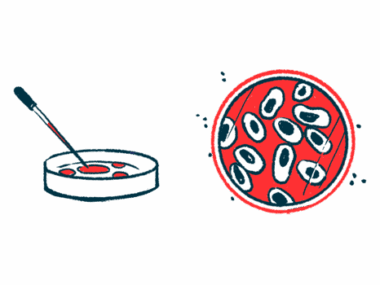Researchers shed light on cellular mechanisms underlying SBMA
Findings may inform development of treatments to preserve nerve cell health
Written by |

A team of U.S. researchers has identified cellular mechanisms that might lead to the loss of nerve cell projections in spinal and bulbar muscular atrophy (SBMA), a rare adult-onset form of the genetic disease.
That’s according to a new preclinical study showing that abnormal protein clumps in the cell’s core and cellular aging processes appeared to play important roles.
The researchers believe targeting these factors could inform the development of new treatments to preserve nerve cell health and function in SBMA patients.
“Our findings may have direct therapeutic implications,” the team wrote.
Their study, “Mutant androgen receptor induces neurite loss and senescence independently of ARE binding in a neuronal model of SBMA,” was published in the journal PNAS.
Investigating nerve cell projections in SBMA
Also known as Kennedy’s disease, SBMA is a slowly progressing form of spinal muscular atrophy (SMA) in which symptoms of muscle weakness and wasting typically emerge in adulthood.
It’s caused by mutations in the AR gene that result in the production of an abnormal version of the androgen receptor (AR) protein, which misfolds and accumulates in cells, affecting the health of nerves and muscles.
AR normally plays a wide range of roles in the body. Among its functions is the regulation of the growth and regeneration of nerve cell projections, or neurites. These projections are important for establishing connections between nerve cells that facilitate normal brain and spinal cord function.
Defects in neurite growth and reduced neurite numbers have been observed in cells containing SBMA-associated mutations in the AR gene. Still, the specific cellular mechanisms that lead to neurite loss in SBMA are not well understood.
Now, scientists from Sidney Kimmel Medical College at Thomas Jefferson University, in Philadelphia, used live-cell imaging to monitor neurite growth and loss over time in nerve-like cells containing the abnormal version of the androgen receptor.
AR normally exists in an inactivated state and is activated when testosterone or dihydrotestosterone, the male sex hormones, bind to it. When that happens, it changes its shape and moves into the cell’s nucleus, where it binds to androgen response elements, called AREs, and influences gene activity, or transcription — the initial step in the formation of proteins.
It’s thought that AR-causing mutations disrupt the protein’s ability to properly conform and disturb the protein’s normal effects on gene transcription.
Work presents a potential ‘avenue for treatment’
In the experiments, the scientists showed that when mutated AR was bound to these hormones, the density of neurites was significantly reduced. Moreover, neurite retraction — the drawing back of nerve cell projections that had previously extended from the cells — was enhanced and their regrowth was inhibited.
Across all of these experiments, disturbed neurite dynamics in the mutated cells did not appear to be related to AR’s ability to bind to AREs and influence gene transcription, according to researchers.
The team noted that reducing or enhancing transcriptional activity at AREs “was neither beneficial nor detrimental,” to the observed effects on neurites.
As such, the scientists suspected that neurite loss was related to other properties of the mutated AR protein, such as its propensity to misfold and clump up, or aggregate.
Indeed, cells with retracted neurites had more abnormal protein clumps in the nucleus, which appeared to be a catalyst for neurite retraction, the team found.
This could have implications for developing new treatments, according to the researchers. For example, strategies to reduce protein clumps in the nucleus might help protect neurites and preserve function in SBMA patients, whereas strategies targeting AR transcriptional functions might not be effective.
Importantly, while the neurite retraction did not directly lead to cell death, it did cause the cells to show signs of senescence, or age-related deterioration, where cells lose their ability to grow and multiply.
Future studies are warranted to further explore the role of cellular senescence in SBMA, the researchers noted. Such studies also will explore whether senolytics, a class of drugs that specifically target senescent cells, could be a therapeutic strategy in SBMA.
More broadly, the researchers believe their findings could apply to other diseases characterized by a mutation type similar to that found in genes other than AR, “presenting an avenue for treatment that is independent of the disease-causing gene,” they noted.








